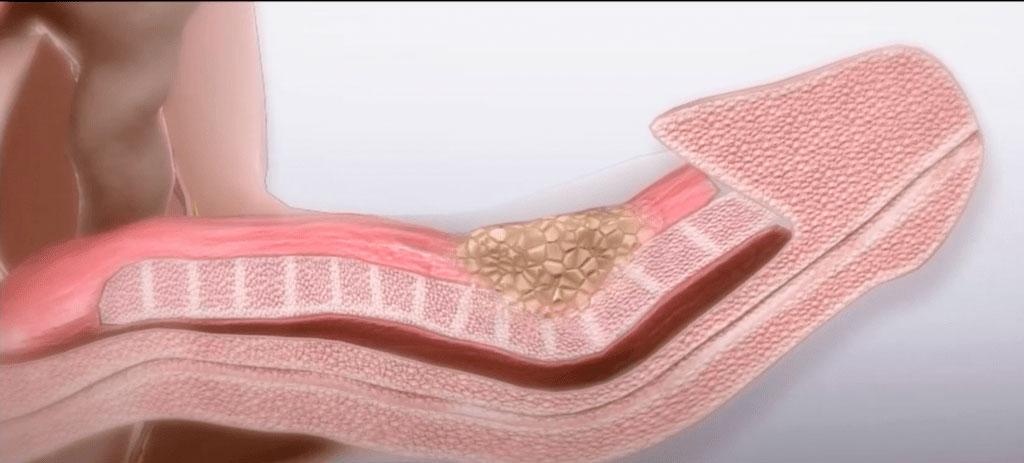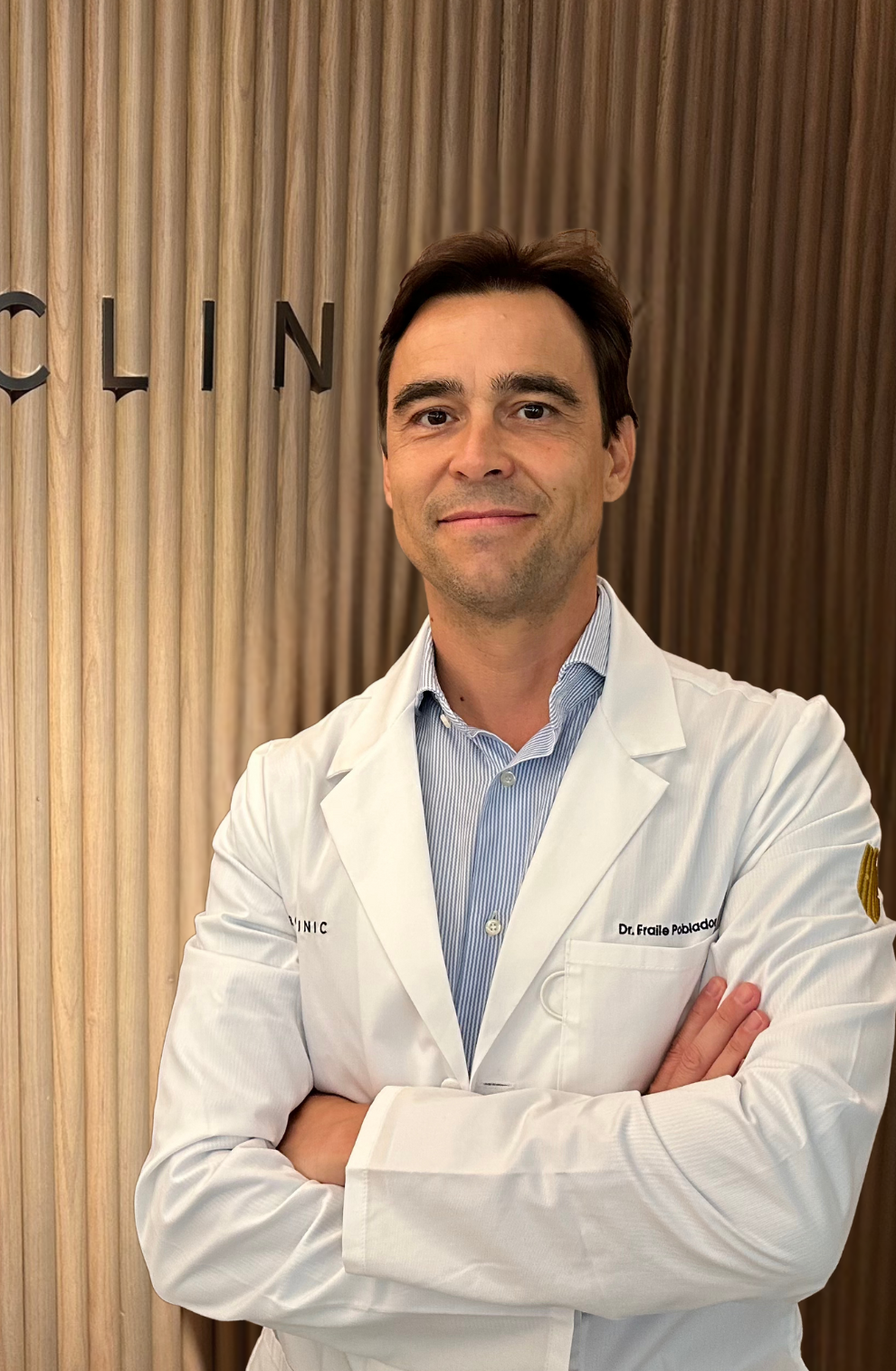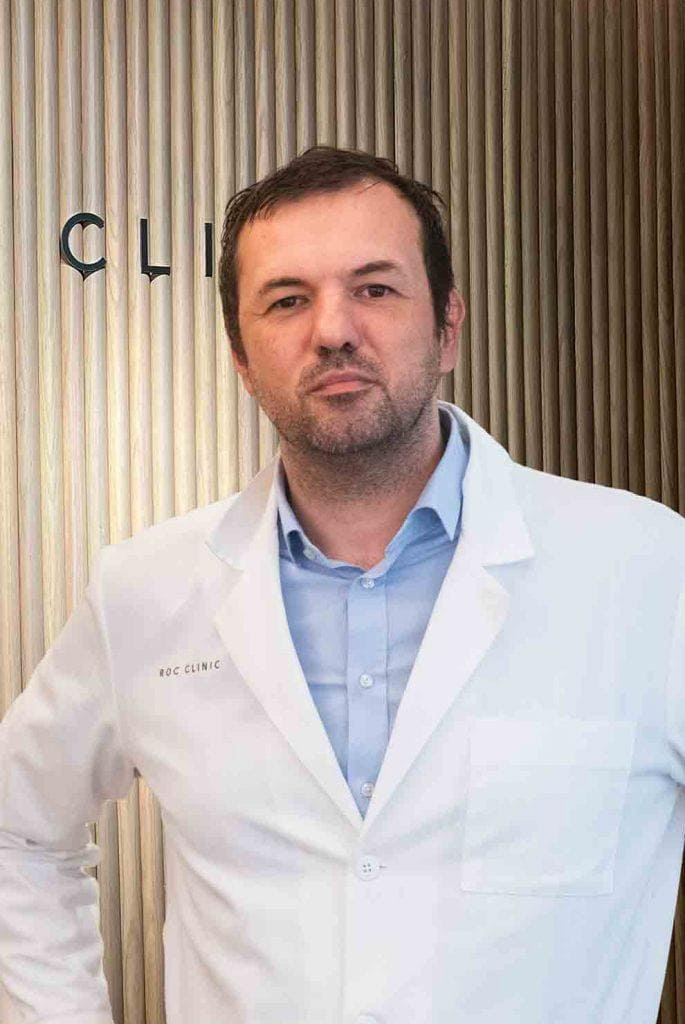Penile Incurvation


- Super-specialized urologists
- Personalized treatment
- Minimally invasive approach
- More than 16,000 patients successfully treated
What is Peyronie's disease?
Peyronie's disease is a fibrosis of the albuginea of the penis (part that covers the corpora cavernosa) that can produce penile pain and incurvation. This fibrous plaque, often painful, can produce further symptoms: 50% of men have only a fibrosis and internal scarring of the penis with no other symptoms. The other 50% have mild curvature and some shortening. In some situations there are very intense curvatures, significant erection problems or complex penile deformities.
Peyronie's disease has two phases:
- The active phase lasts about 1 year and is the time when changes in the shape of the penis occur, whether or not associated with pain.
- The stable phase is characterized by a standstill of these alterations for a period of three months. In this phase no further changes occur.
There is another cause of penile incurvation which is congenital penile incurvation. This typically occurs in males from infancy and usually manifests as a downward curve. Unlike Peyronie's, there is no pain and the curve is not progressive. The only alternative is surgery to correct the curve.
Causes of peyronie's disease
The cause of Peyronie's disease is unknown. There are about thirty genes that have been related to the fact of presenting Peyronie's disease. Along these lines, we know that other fibrosing diseases, such as Dupuytren's (fibrosis of the palm of the hand), Ledderhorse (fibrosis of the sole of the foot) or retroperitoneal fibrosis may be related to penile incurvation. Men who have any of these diseases are more at risk for Peyronie's and vice versa. On the other hand, some men who have Peyronie's disease are more predisposed to develop one of these diseases.
In addition, approximately half of the men with Peyronie's disease report having had vigorous sexual intercourse, often associated with a cracking sensation, just prior to the onset of penile incurvation.
Symptoms of peyronie's disease
Peyronie's disease presents 5 symptoms, whose combination and time of onset are very important when establishing the most appropriate treatment for each case. The 5 symptoms are:
- Pain in the penis, which is usually more common with erection or after intercourse.
- Incurvation of the penis, which is the most characteristic symptom; erection problems, which may be associated with pain or incurvation.
- Penile shortening, which is closely related to incurvation and is often of great concern to men.
- Hourglass deformity, which is one of the most severe and difficult to treat sequelae.
Diagnosis of Peyronie's disease
The diagnosis of Peyronie's disease is made by physical examination in which a fibrosis of the penis is observed. Additionally, a photograph of the erect penis in several projections (Kelami test) can be requested to see the shape, intensity and location of the curve.
Treatment of Peyronie's disease
The treatment of Peyronie's disease varies according to the stage of the disease:
- In the active phase, surgical treatment is contraindicated. However, although it was usually recommended to wait for the stable phase to establish the severity of the problem and proceed to surgery, in the active phase treatments that limit the extent and sequelae of fibrous plaque can be applied, such as oral treatment with Tadalafil, penile traction therapy, intraplaque injections and low intensity shock waves.
- In the stable phase we can opt for treatment with surgery in cases where the curvature is very intense and makes sexual intercourse difficult or impossible, if there is a significant erection problem, when there is much shortening of the penis or if you have a very intense hourglass deformity.
The different surgical techniques that exist for peyronie's surgery are:
- Plication: this is the most conservative surgery. It allows the penis to be disincurred through the application of contraction stitches which, as a secondary effect, shortens the penis.
- Corporoplasty: penis enlargement procedures that allow us to straighten the penis, although they are more complex and may cause erectile dysfunction.
- Implantation of penile prosthesis to ensure penile length and erection. This surgery has few complications but it is necessary to understand that the prosthesis usually changes the mechanism by which erection occurs.
They ask us in the Consultation
See more questionsTeam of the Penile Incurvation unit
Newsof ROC Clinic in Penile Incurvation
Research
Advances in activation pumps for three-piece penile prostheses: a narrative review


 +34 912 627 104
+34 912 627 104 Contact
Contact









